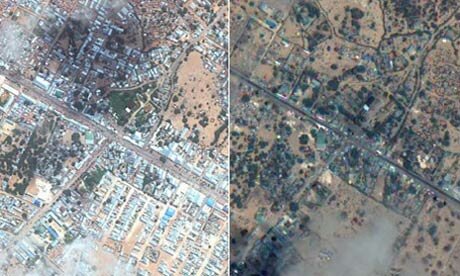 Bartamaha (Afgoye):-The Afgooye corridor should be a place of infamy. But the world’s largest concentration of internally displaced people is located just outside the war-torn Somali capital of Mogadishu. It is an area the world has hardly heard about.
Bartamaha (Afgoye):-The Afgooye corridor should be a place of infamy. But the world’s largest concentration of internally displaced people is located just outside the war-torn Somali capital of Mogadishu. It is an area the world has hardly heard about.
Journalists don’t go to the corridor. International aid agencies can barely reach it. The consequence is that stories of the hundreds of thousands living there are rarely told. If ever.
Once a rural area, the Afgooye corridor is now the third largest urban area in Somalia after Mogadishu and Hargeisa in Somaliland. It is the country’s capital of the displaced.
Last year, when I wanted to write about conditions in the Afgooye corridor it was necessary to travel to camps in the Somaliland cities of Burao and Hargeisa to find people who had recently escaped on the trucks that ferry those hoping to escape to Galkayo in Puntland. The journey takes months for some, and can cost $300 for a family. Few have that kind of money.
They told stories of battles fought between Amisom, the African Union peacekeeping force, and the Islamist militia fighters of the Shabab inside the sprawling camps that line the road for miles.
They described the abuses of the Shabab – beatings, theft and murder – and the hunger and insanitary conditions. The Afgooye corridor’s residents struggle for food and other basic necessities in a place beyond the reach of the aid agencies.
What assistance does get through is delivered by local partners but, according to the UN, the amounts are tiny in comparison with the needs. The result is that many residents are forced to risk walking into Mogadishu every day in search of a daily living.
Now, in an extraordinary project, the United Nations High Commissioner for Refugees has used satellite imaging both to estimate how many people are living there, and to give the corridor a concrete reality.
The images of the camps have led the UN’s refugee agency to estimate that the number of people living in the Afgooye Corridor is a staggering 410,000. Previous estimates, in September 2009, had put the number at 366,000.
In the last three years, since the escalation of the conflict in south central Somalia, the Afgooye corridor has grown from a few dwellings along the road between Mogadishu and the nearby town from which it takes its name, to a place of 91,397 temporary shelters and 15,495 permanent dwellings. Comparison of satellite images has revealed that substantial new construction of dwellings is continuing as people flee the fighting in the capital.
To determine the population size, UNHCR measured the habitable surface areas of every dwelling and applied different population densities to permanent and temporary structures, based on population densities from comparable areas in Somalia.
In addition to some 410,000 displaced people in Afgooye, it also estimated that there are 55,000 people in Dayniile (to the north of Mogadishu), 15,200 in the Bal’cad corridor (the northern periphery of Mogadishu City) and 7,260 in Kax Shiiqaal (the city’s western periphery). The displaced population in Mogadishu itself is estimated to be around 3720,000.
The satellite images have also mapped how the settlement of the Afgooye corridor has changed over the last three years. As the population has increased, there has been a rapid urbanisation of the area, with entire new towns replacing the tens of thousands of makeshift shelters composed of cloth and fabric.
That building tells its own depressing story, reflecting how, for those living there, hopes of a safe return to the capital have faded.
————————————————-
Source:- The Guardian



